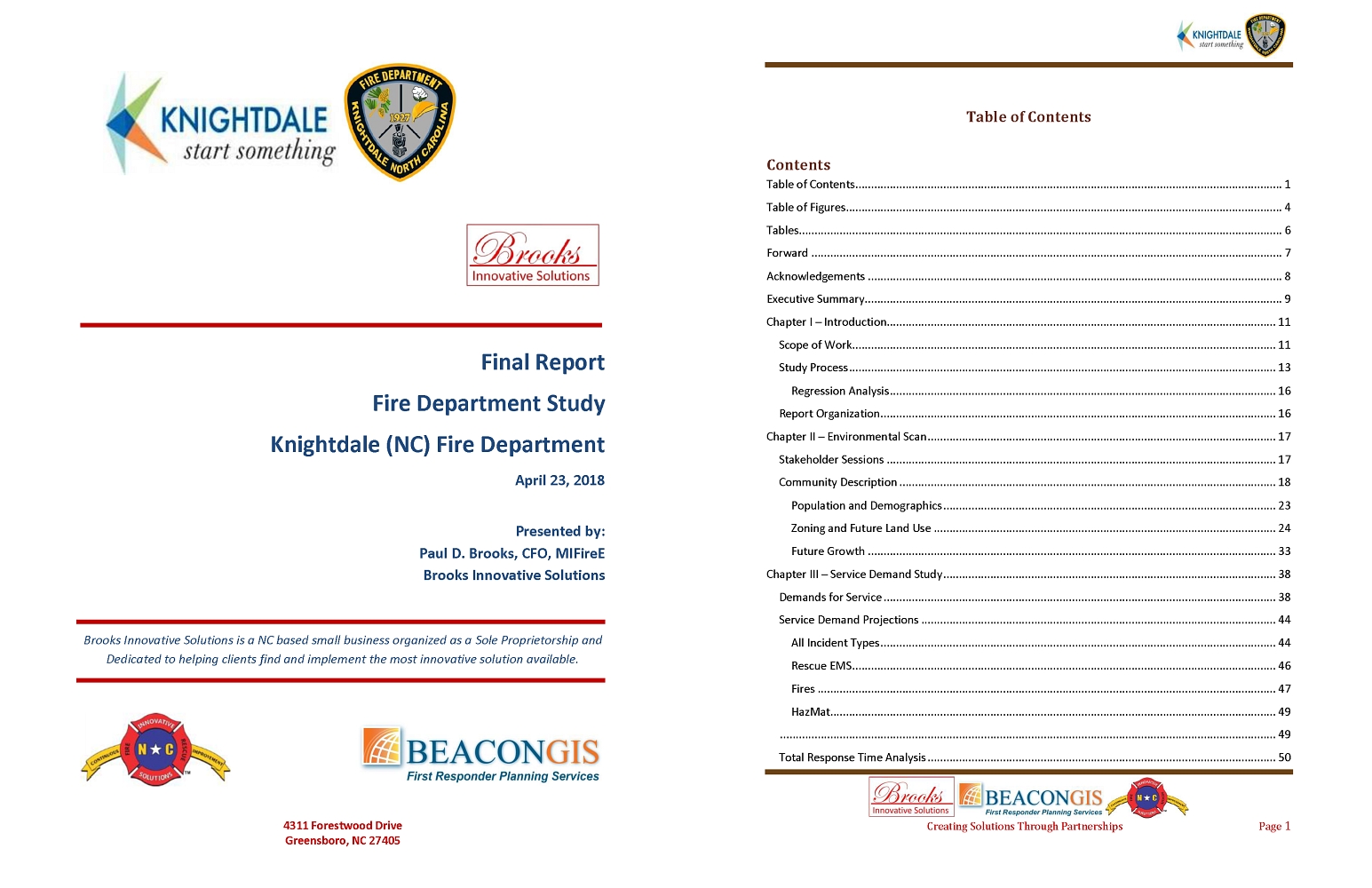On Thursday, February 13, 2020, a community meeting was held in eastern Wake County, to present a proposed merger of the Eastern Wake Fire Department with the town of Knightdale and its fire department. During the meeting, a town-commissioned 2018 study of the Knightdale Fire Department was heavily referenced.
Here’s that document: www.legeros.com/blog/docs/2018-knightdale-study.pdf
The four original components of the study’s objectives were:
- evaluate existing and future station locations
- evaluate existing and future staffing
- evaluate existing and future fleet needs
- evaluate the adequacy of future succession planning.
The 114-page study presented these recommendations:
Station Locations
- Commission a feasibility/implementation study to evaluate a merger/consolidation of operations/organizations between the town of Knightdale Fire Department and the Eastern Wake Fire-Rescue Department.
- Develop plans for land purchase for a station location in Grid 11 of the Station Location Matrix located as near as practical to Lynwood Road and the I-540 overpass. This would include search in the area of Lynwood Road and Hodge Road.
- Begin Design work and financial planning for a new fire station to principally serve first due to Grid 11 in the Station Location Matrix. The entire project for the deployment of a new station and the resources required for equipping and staffing the station with a single engine company or quint would be planned over budgets from 2019 until 2021. Based upon recent and similar projects in the region, it is recommended that an estimated budget might be approximately $350,000 for planning and design, and $3.5 million to $4.5 million for land acquisition and construction.
- Begin negotiations with Wake County Fire Services to begin participating in the Wake County Cost Share Program as part of a merger/consolidation effort.
- Begin negotiations with Wake County EMS. This organization has a very strong interest in co-locating in a station that provides them the options in response which new Station #2 might. The degree of financial participation may be based on a number of factors, but could be as high as 20%-33%. The negotiation could include offsets for some operating costs associated with EMS use of a portion of the bay and crew areas.
- Utilizing the forward view approach encouraged by this model, develop a long term plan for additional fire stations (15-20 years out) as the jurisdiction continues to develop.
- The Mingo Bluff property is not a very effective or efficient location for a fire station. It will not be of value to co-locating partners. Access to the nearest main thoroughfare requires negotiating neighborhood streets and would be very close to a school. The property itself may be very xpensive to prepare for construction. The recommendation is to find another use for this site other than emergency response deployment.
- . Begin a process to routinely capture and analyze Alarm Handling Time, Turnout Time and Travel Time for the first due unit for incidents as well as the full effective response force. This behavior and data will be required for accreditation.
Personnel
- There is an immediate need to add four personnel to staff the ladder company.
- Plan for company staffing of four personnel for a company located in the new Knightdale Sta.#2.
- Add a deputy or assistant chief position to assist the fire chief with administration and department management and to enable future succession planning for fire chief’s position.
- Transition the part-time fire inspector position to full time.
Fleet
- There is an immediate need to replace [Ladder 135]. This piece of equipment is twenty-one years old, six years older than the current industry standard recommends for the maximum age of a first line piece of fire equipment and is older than the recommended replacement age in the Wake County Fire Commission Apparatus Committee, Policy and Procedures. This aerial device is larger than the district would require therefore, it is further recommended to investigate replacing the 105 foot aerial with a 75’ or 85’ aerial on a shorter and much lighter chassis.
- It is recommended to replace Engine 134 in the year following Ladder 135 and rotate apparatus to place the new engine as first out and remaining engines in order based upon their current serviceability. Although Engine 134 is not the oldest engine in the fleet, the component assessment, maintenance and repair costs and current general poor operating condition suggests moving it ahead in the replacement schedule.
- A fleet capital plan should be developed to begin programming replacements for large apparatus based upon industry standards and score card results. According to the industry standard, Engine 133 already exceeds the industry standard for first line service and should be retired in 2022. Engine 132 should be taken out of first line service in 2023 and should be retired in 2028. The town has guidelines for replacement schedules for the command vehicle and two utility vehicles.
- It is recommended that the department maintain the Vehicle Score Card System used in this study, or some similar process to help manage a fleet replacement and capital program.
Facebook Comments
